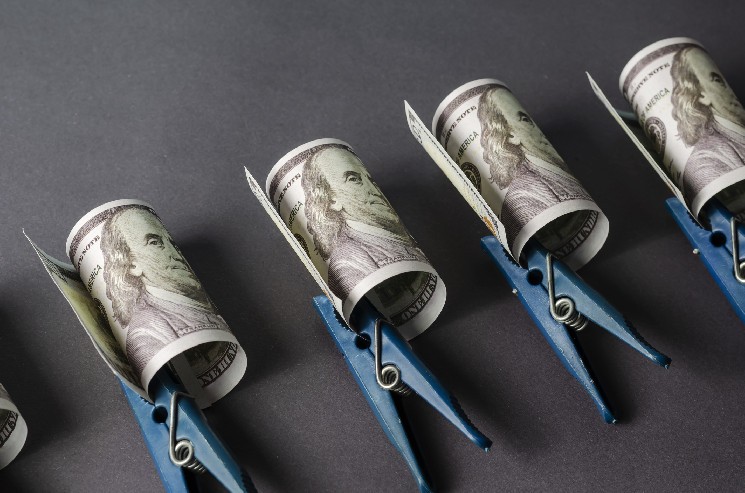Stablecoins Gain Traction as Inflationary Shield in Latin America, Europe Also Sees Growth

Stablecoin adoption worldwide continues apace despite the bear market and the banking crisis, which saw some projects (notably USDC) lose their dollar peg, Latin American and European crypto specialists said during a recent Spanish-language CoinDesk Twitter Spaces event.
“We see that stablecoin adoption continues to rise non-stop since 2019. In fact, stablecoins today represent more than 50% of Belo’s trading volume,” said Manuel Beaudroit, CEO and cofounder of Belo, an Argentina-based crypto exchange that operates in 136 countries.
Read this article in Spanish.
“Our second-biggest market is El Salvador, where bitcoin is a legal tender, and many users use our platform to deposit bitcoin in exchange for USDT,” he added. (USDT is the short name for tether, the biggest stablecoin by volume.)
Stablecoin market share kept growing during the bear market, even with the fall of bitcoin, ether and other altcoins, said Agustín Liserra, CEO and cofounder of Num Finance, an Argentina-based company that issues stablecoins pegged to developing countries currencies.
“Although it is true that crypto activity has decreased since the bear market, the participation and capitalization of the stablecoin market has grown a lot,” Liserra said.
Adoption varies by region. In a more developed economy, the growth was driven mainly by seasoned traders and investors; in Latin America, it came more from everyday citizens trying to protect their money from inflation.
In Europe, stablecoin adoption has been increasing since the crypto winter in 2017, when most investors and traders wanted to protect themselves from volatility within the crypto system, says Cristina Carrascosa, CEO and cofounder of ATH21, a Spain-based legal firm specialized in crypto and blockchain companies.
“The adoption in Europe didn’t come from fear or from wanting to protect savings, but more from speculation and using DeFi protocols to seize the benefit of the returns,” Carrrascosa said.
A Latin American way
Latin America has some of the world’s highest inflation rates, with up to 50% of its workforce working in informal conditions and therefore operating outside the banking system.
In Argentina, the central bank imposes severe restrictions on the citizens from buying U.S. dollars, hoping to maintain its own federal reserves. That increases the attraction of buying a dollar-denominated stablecoin via the internet. “With a stablecoin, you can access a dollar account without having a dollar account,” Beaudroit said.
“Many people wanted to find a way to ‘dollarize’ their savings and found in DAI, USDC and USDT a very friendly way to do it,” Liserra said.
According to Chainalysis’ 2022 Geography of Currency report, Latin America’s key crypto adoption drivers are storing value and sending remittances, for which stablecoins are widely used.
Meanwhile, Central, Northern and Western Europe are the largest crypto economies worldwide thanks to DeFi, NFTs, and growing regulatory clarity, with a lower daily usage for stablecoins.“The new regulation affects all players such as service providers, token and stablecoin issuers who need to apply for licenses to operate and a published white paper,” Carrascosa said about the recently approved MiCA regulation. “Regulatory demands increase for stablecoin issuers that become ‘relevant’ to supervisors,” she added.
“[European]Users are beginning to forget about fiat currency as their business flow is earned and spent directly in stablecoins,” Carrascosa said.
This is also a trend in Latin America, where more people now earn their salary directly in “crypto dollars” or stablecoins, depositing them in wallets and using them to live every day, according to Beaudroit.






 Bitcoin
Bitcoin  Ethereum
Ethereum  Tether
Tether  USDC
USDC  TRON
TRON  Dogecoin
Dogecoin  Cardano
Cardano  Bitcoin Cash
Bitcoin Cash  LEO Token
LEO Token  Chainlink
Chainlink  Zcash
Zcash  Monero
Monero  Stellar
Stellar  Litecoin
Litecoin  Hedera
Hedera  Dai
Dai  Cronos
Cronos  OKB
OKB  Tether Gold
Tether Gold  Ethereum Classic
Ethereum Classic  KuCoin
KuCoin  Gate
Gate  Algorand
Algorand  Cosmos Hub
Cosmos Hub  VeChain
VeChain  Tezos
Tezos  Dash
Dash  TrueUSD
TrueUSD  Stacks
Stacks  IOTA
IOTA  Basic Attention
Basic Attention  Decred
Decred  Theta Network
Theta Network  NEO
NEO  Synthetix
Synthetix  Qtum
Qtum  0x Protocol
0x Protocol  Ravencoin
Ravencoin  DigiByte
DigiByte  Nano
Nano  Zilliqa
Zilliqa  Holo
Holo  Siacoin
Siacoin  Numeraire
Numeraire  Waves
Waves  Ontology
Ontology  BUSD
BUSD  Status
Status  Enjin Coin
Enjin Coin  Hive
Hive  Pax Dollar
Pax Dollar  Lisk
Lisk  Steem
Steem  Huobi
Huobi  OMG Network
OMG Network  NEM
NEM  Bitcoin Gold
Bitcoin Gold  Augur
Augur  Bitcoin Diamond
Bitcoin Diamond  HUSD
HUSD